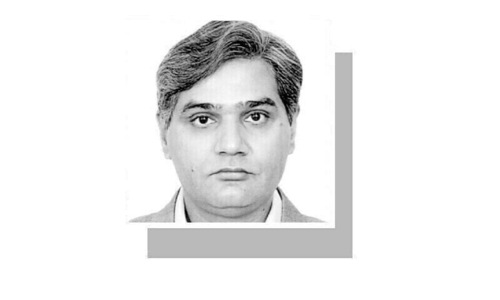The session titled “Aurangzeb Alamgir – Man and King – reassessing the longest ruling Mughal Emperor” was a talk about American historian Audrey Truschke’s book “Aurangzeb: The Man and The Myth.”
Art historian F.S. Aijazuddin, who moderated the event, made a brief introduction to the book.
Paintings depicting various phases of Aurangzeb’s life (1618-1707), including his fight with a mad elephant in 1633, were shown through slides.
Opening up the discussion, Ms Truschke, an assistant professor of South Asian history at Rutgers University in Newark, New Jersey, spoke of Aurangzeb as a prince, war of succession among four brothers and alignment of their sisters. She said Jahan Ara supported Dara Shikoh, Roshan Ara Begum sided with Aurangzeb and Gohar Ara extended support to Murad Baksh.
She narrated how Aurangzeb disposed of his brothers, imprisoned his father Shah Jehan and ascended the throne. She said two coronation ceremonies for Aurangzeb were held – one in 1658 and other in 1659 – the latter being the lavish one.
After Ms Truschke ended her account of the bloody war of succession, Mr Aijazuddin brought about a comic relief saying, “We are a bit civilised now. A war [in the Sharif family] is being fought here in a discreet manner.”
The author said the historical evidence suggested Aurangzeb executed Hindus and Muslims in equal number while the share of Hindus in nobility was not that much low that he be dubbed a Hindu hater. She said the Mughal emperor evolved policies keeping in view ‘the large interest of the empire.’ She said Aurangzeb strove to be a ‘just’ ruler.
About demolition of temples, she blasted the myth of large-scale destruction saying a few such incidents did take place. Ms Truschke said she was vilified by the Indians on social media, especially the ‘monster’ twitter, after this book. She said a road named after Aurangzeb Alamgir was renamed Abul Kalam Azad Road, former Indian [Muslim] president in 2015.
During the course of the conversation, Mr Aijazuddin drew a parallel between the last 17-year rule of English king George V (1910-1936) and [last] 26-year reign of Aurangzeb. He said, according to biographers, the English king dabbled in collection of stamps and the Mughal emperor spent 26 years in Deccan ‘insignificantly’.
He read out an order issued by Aurangzeb to the ruler of Mewar and drew another parallel between the edict and the famous speech made by the Quaid-i-Azam in the Constituent Assembly on Aug 11, 1947.
During the question-answer session, an attendee suggested Ms Truschke to write on ‘women in Aurangzeb’s life’.
Published in Dawn, February 25th, 2018















































Dear visitor, the comments section is undergoing an overhaul and will return soon.